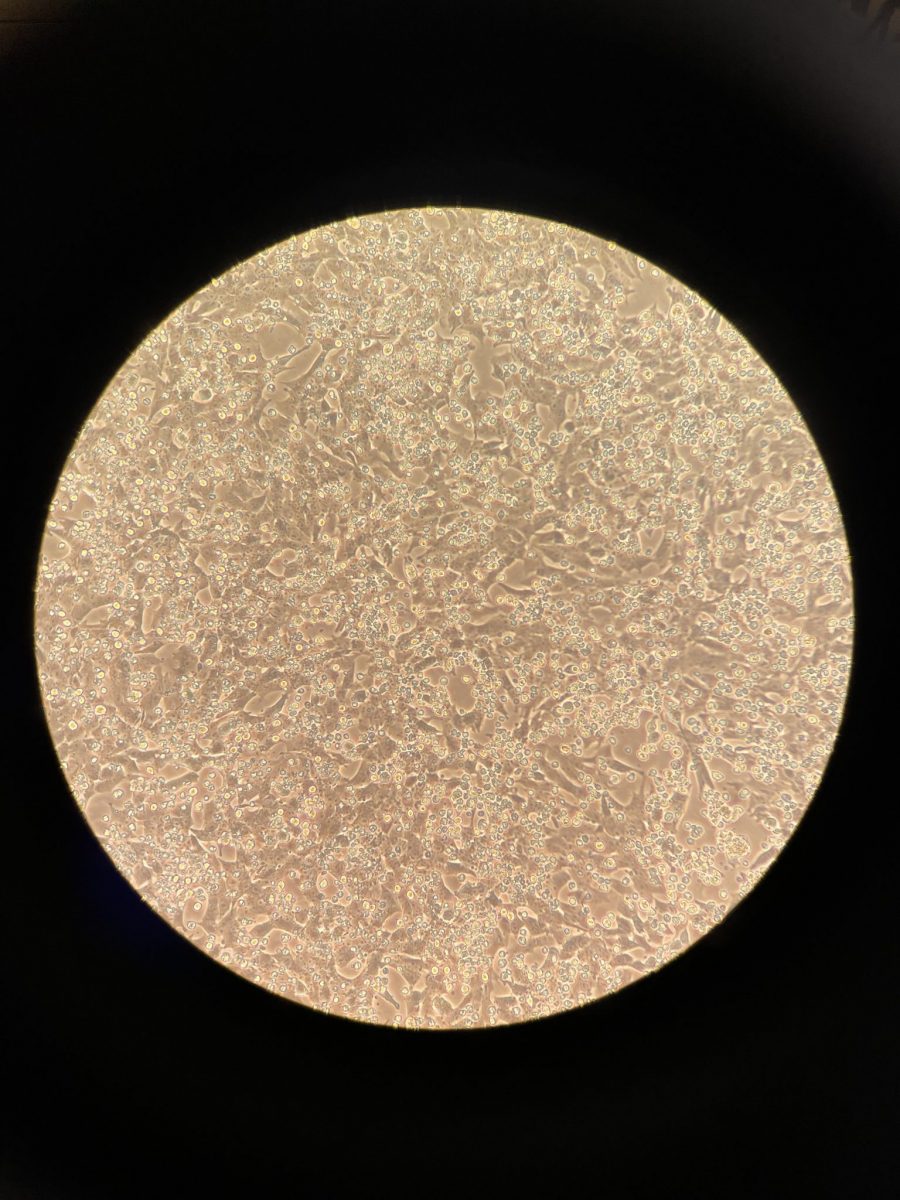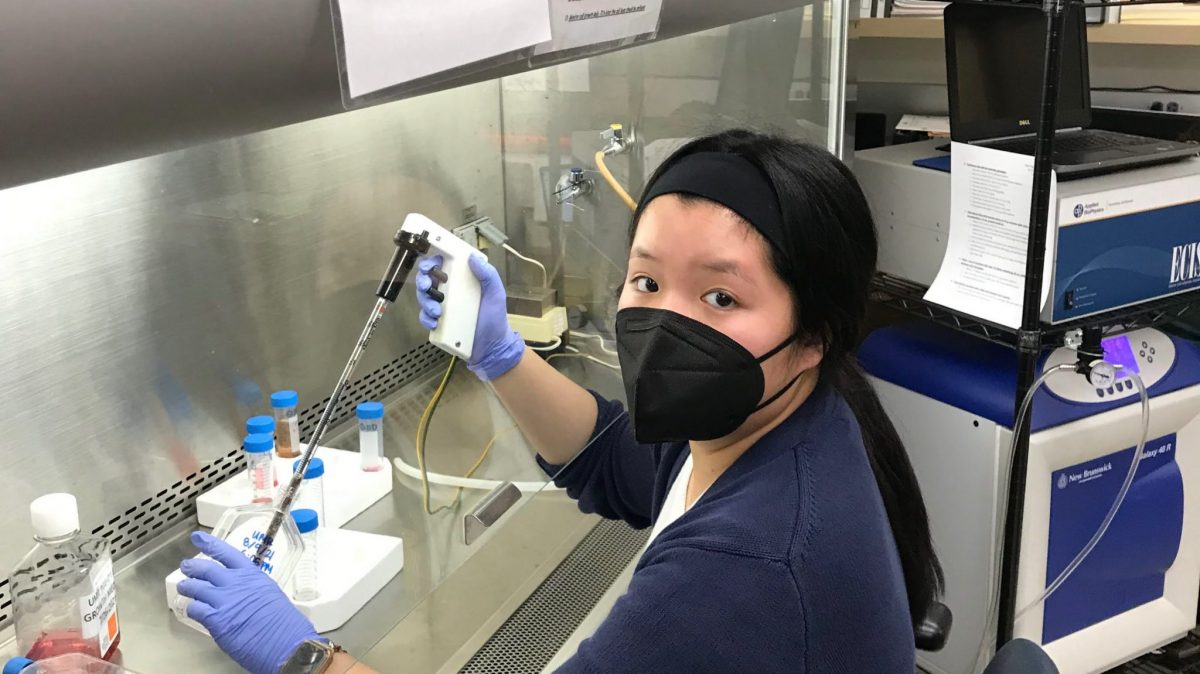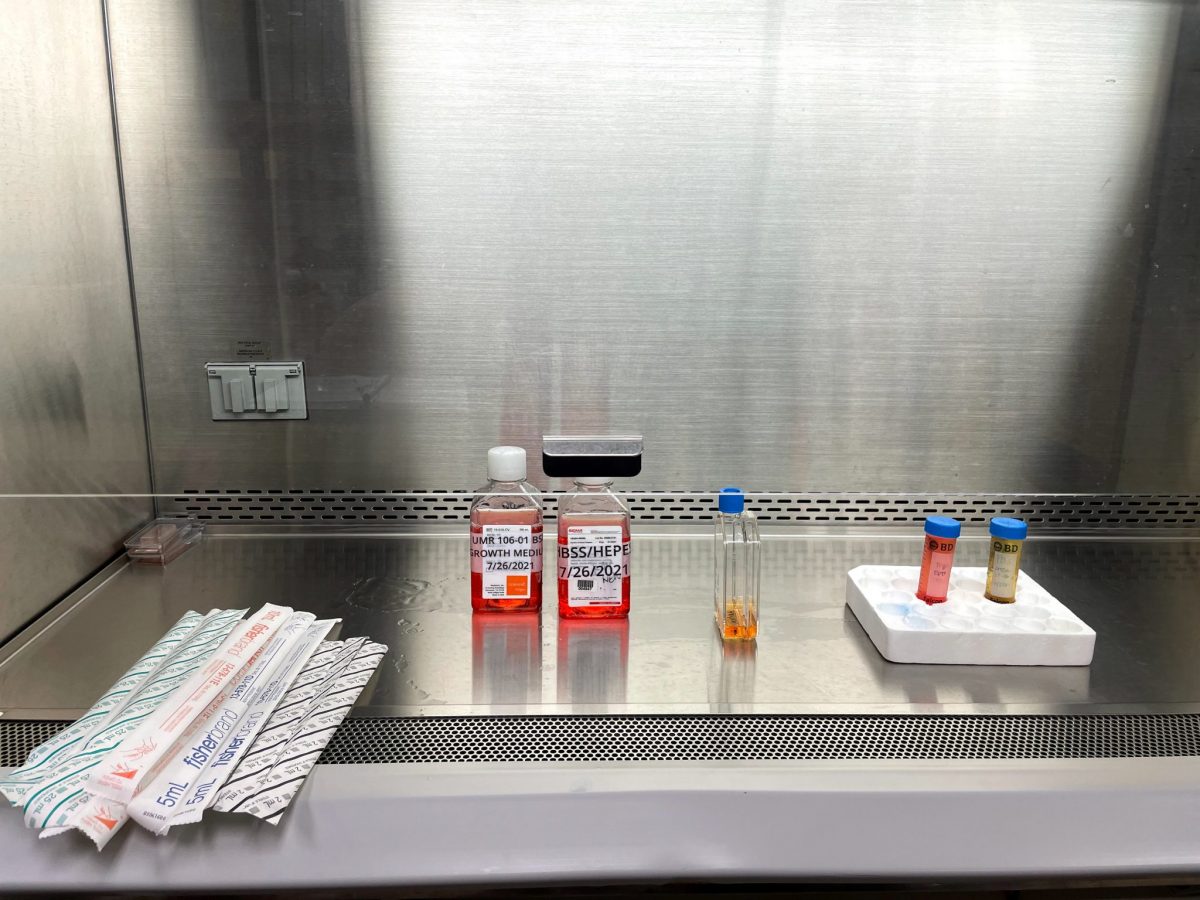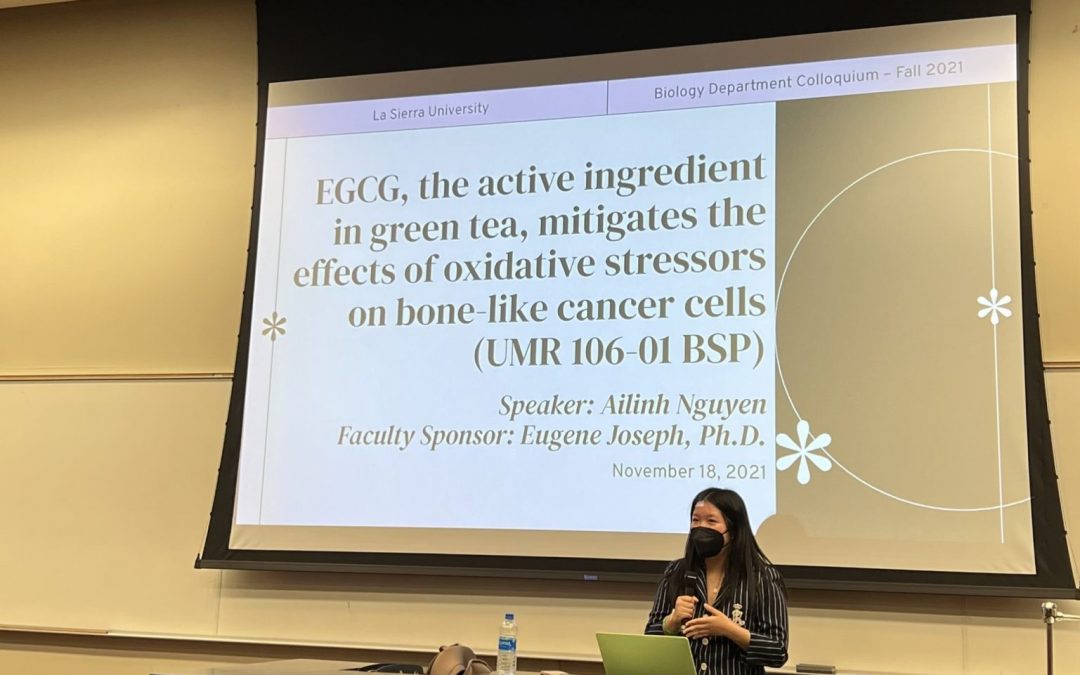“The cells are like your patients.” These gentle words have reverberated in my ears and flowed through my head like the perpetual waterfalls of wisdom beyond the targeted eight weeks of this past summer. Dr. Joseph is absolutely right! As a student majoring in biomedical science, I have always been interested in undergraduate research. But, that particular moment of down-to-earth, one-on-one mentorship solidified my dreams of conducting meaningful research, instilled in me a sense of professional responsibility, and affirmed God’s calling to serve others through pursuing the art of medicine by starting at the most basic cellular level of life.

During my freshman year at La Sierra University, the scientific works performed by the students and faculty in the biology department captivated my attention. At the first 2019 Pre-Medical Society meeting in the fall, I was fortunate enough to speak with Dr. Joseph, whose investigative studies center around rat osteosarcoma cells (the UMR 106-01 BSP cell line specifically), for hours that evening. He acknowledged my interest and enthusiasm for his lab. Gradually, he granted me the opportunity to shadow some of the senior students in the lab after I demonstrated sufficient understanding of the various research procedures over a course of several months of being grilled. I just could not believe I was blessed to be a part of the crew. From that moment forward, I have become enamored with the incredibly impressive growth/ development of these amazing cells and all the research activities in this powerhouse.
Eventually, when I started my second year of college, I officially became a part of the lab team and able to start planning my own project! As Dr. Joseph frequently cautions, research is not a strictly scheduled course activity, but you have to devote lots and lots of ample time. So, with all the Zoom meetings several times a week and preparation of the Ryckman Endowment Grant Proposal to receive funding for critical lab materials, it was definitely challenging for me to fit research into my schedule because I had so many things in mind for the project. Furthermore, I juggled balancing research with school, volunteer obligations, quality time with my dogs, and church activities because of the competing time commitments for experiments that usually run for five to six hours at a time.
Towards the end of my sophomore year, Dr. Joseph brought to my attention the eight-week-long Summer Research Experience, funded by Title V. At first, I was a little hesitant to spend my whole summer doing research, commuting between Loma Linda and Riverside, and working independently in the nearly empty biology department. Ultimately, I decided that this program would be super exciting because it would allow me to not only brush up on my techniques but also to complete all the research tasks that I wanted to do over the academic year without the distractions of carrying a full load of classes. And, I am so glad that I embraced this once-in-a-lifetime opportunity during this epic era of COVID-19 restrictions to literally walk again on the grounds of the idyllic La Sierra University campus once filled with students after almost seventeen months, watch the lone coyote roam the desolate hills, and actually be inside a building beyond my home.

The eight weeks of research sped by like the Shinkansen bullet train with its grueling schedule of activities. Dr. Joseph and I had outlined the summer to be the following: discussing the project (hypothesis, specific aims, experimental design), carrying out routine lab procedures, conducting experiments, analyzing results, preparing for the final program presentation, and working on a poster to be submitted later in the fall quarter –– all on top of putting together weekly Friday report presentations to go over with Dr. Gutierrez (program coordinator). My project focused on whether or not EGCG (epigallocatechin-3-gallate, the key active ingredient in matcha green tea) can mitigate/lessen the detrimental effects of oxidative stress (an imbalance of free radicals/reactive oxygen species and antioxidants) on rat osteosarcoma cells. Based on the data obtained, I concluded that EGCG can protect the cells from oxidative stress. So, keep drinking your daily intake of matcha!

The days spent in this fantastic educational program –– which was nearly every single day, even on Sundays–– were dauntingly arduous. At the beginning of the experience, we dealt with continued contamination issues from the previous quarter, which put us back a few weeks in order to solve the problem. When we started doing experiments, I vividly remember being in the lab from about 1 P.M. to 12 A.M. since I had to wrap up a few tasks before I even started the experiment, which consumed at least four hours alone.
While this was all very demanding, I had such a blast working with the cells and Dr. Joseph. Working these long hours and spending so much time in the lab truly showed me the importance of research, which is not always perfect. I will not always get the desired results of the experiment on the first try… or even on the second try. It is something that is going to require safe, in-person access to the campus, university support, functional equipment, financial subsidies to procure necessary research materials, team collaboration, nurturing faculty mentorship, personal sacrifices, time, reading up on the literature, careful data analysis, and patience. Overall, the process itself is an amazing journey, and that is what makes research so enjoyable. There is nowhere else — not even Disneyland — I would have rather been this summer than Dr. Joseph’s research lab in the Price Science Complex.

As mentioned, my greatest takeaway from the Summer Research Experience is the words that Dr. Joseph said which still resonate in my mind. “The cells are like your patients.” As someone aspiring to go to medical school and hopefully become a child and adolescent psychiatrist, I would have to take great care, spend time understanding the situations, and pay close attention to my patients. And, this is exactly what I did this summer with the cells that I fell in love with… to the extent that I even dreamed about them one summer night. I will never forget my experience with the cells during the unforgettable eight weeks, and I hope to apply the life lessons learned when I do treat patients in the near future.
Words cannot express my immense gratitude for the opportunities that I was blessed with during this historical pandemic of shutdowns and social isolation. This summer program provided the much needed first steps towards a return to the new normalcy of the college educational experience, in which I was able to connect with fellow student researchers and professors. In fact, I had a lot of fun sharing my summer research project findings at the final presentation hosted via Zoom meeting this past September and at the first in-person, post-COVID-19, biology department colloquium on Thursday, November 18, 2021. Also, I submitted an abstract for the chance to have a poster presentation at the Experimental Biology 2022 Conference in Philadelphia next April. Additionally, I plan to use my findings on EGCG and oxidative stress as the basis for my Honors Scholarship Project. All of this would not have been possible without the relentless teaching commitments of Dr. Joseph, Dr. Gutierrez, Ryan VanDeventer, La Sierra University, and the Title V team. Thank you all so much for this enormous learning opportunity of a lifetime. I am beyond excited on cloud nine to see what the next two years of research will have in store for all of us.
–– Ailinh Nguyen (Biomedical Science, Class of 2023)

